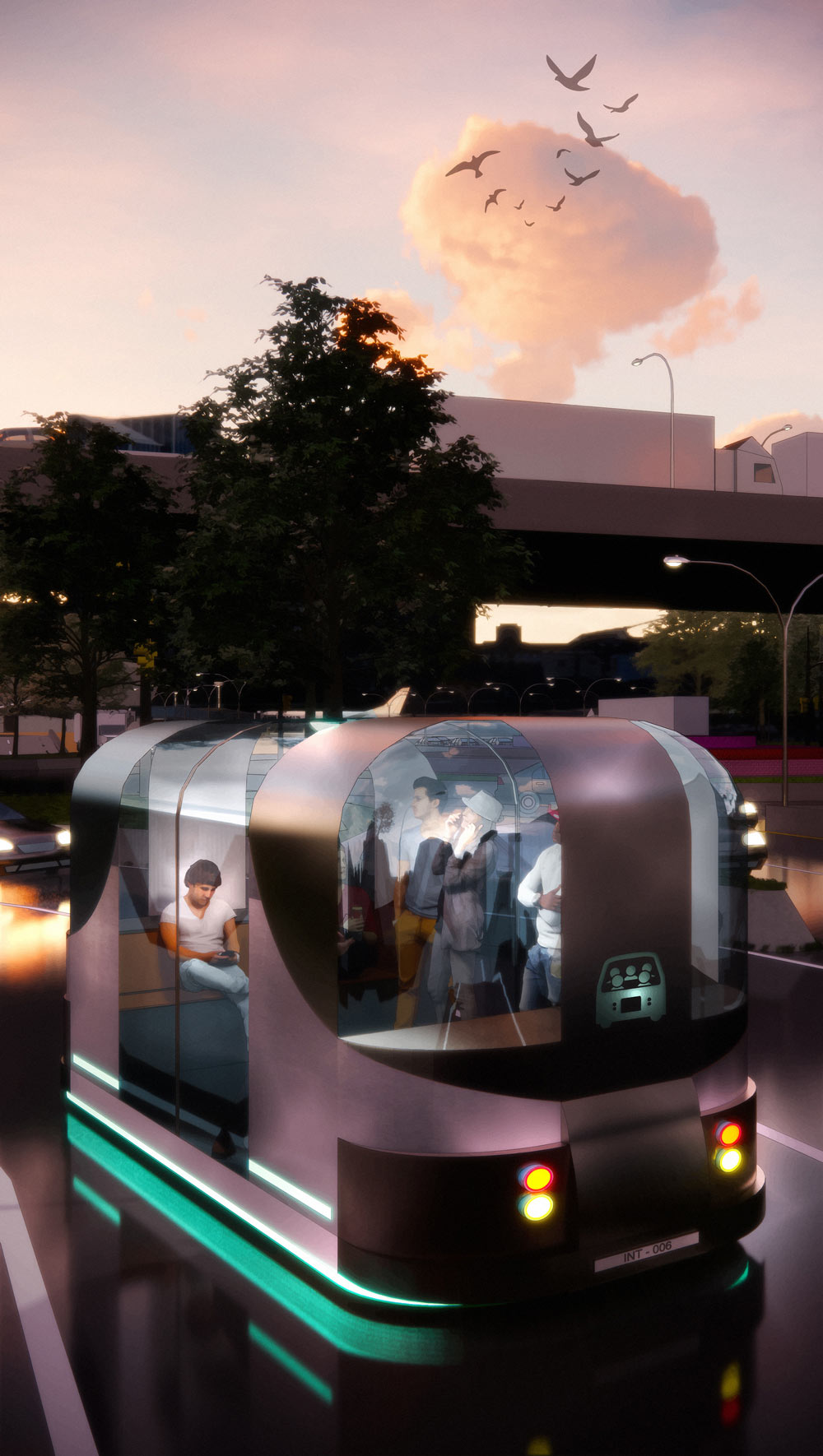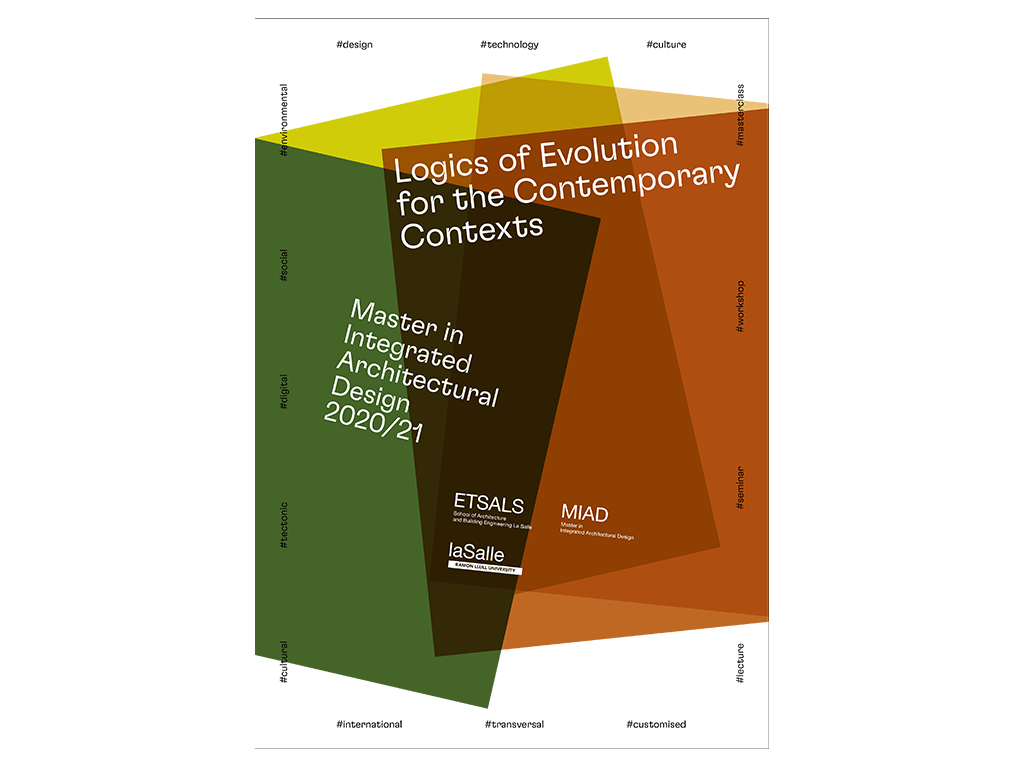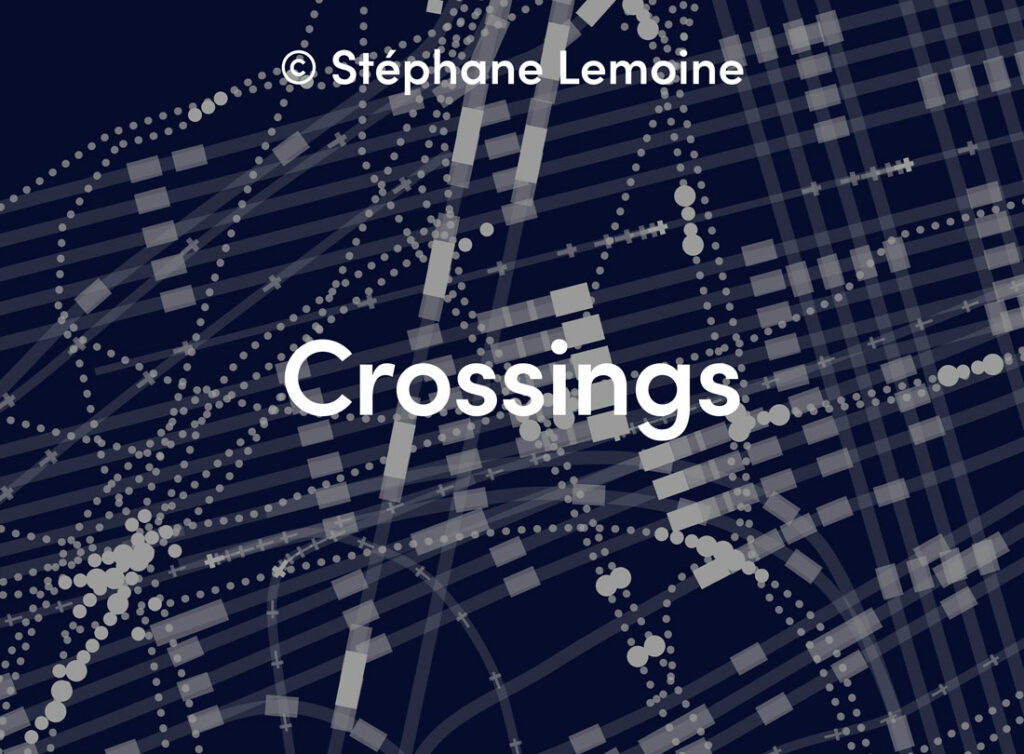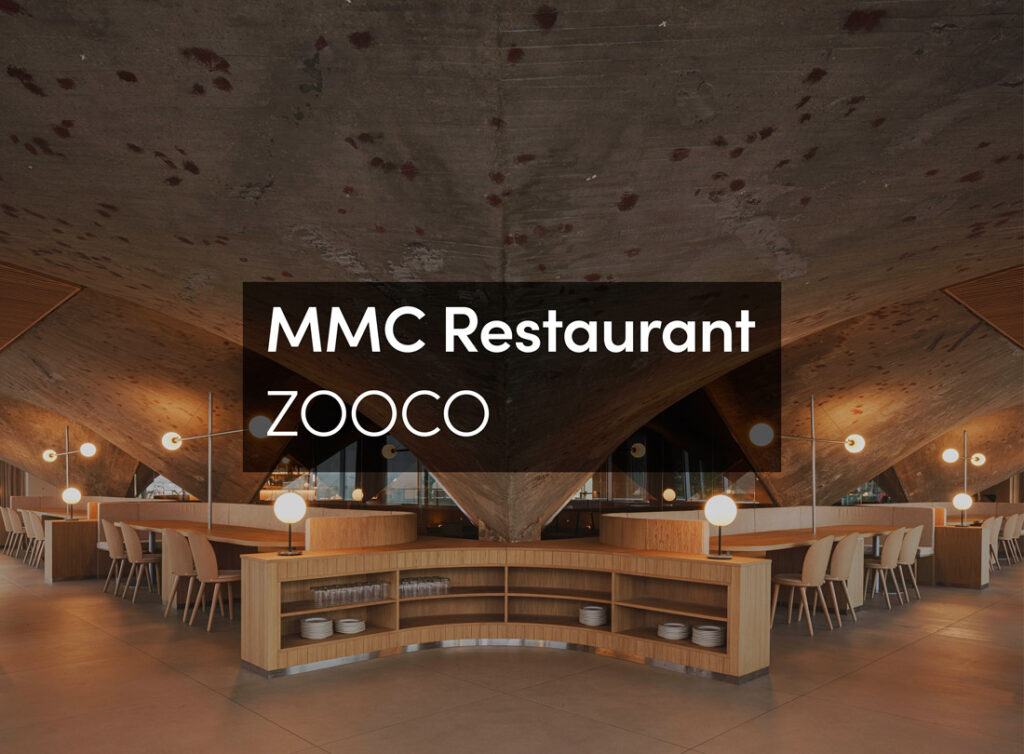Our cultural imagination of the future invariably involves something floating, flying, or hovering. The Jetsons have their aerocar, Han Solo pilots the Millennium Falcon, and the humans in Wall-E sit around in squishy floating armchairs. These transportation fantasies have permeated Silicon Valley as well. Google co-founder Larry Page and ride-hail firm Uber are working on flying cars. Elon Musk is developing his frictionless hyperloop. In 2016, Domino’s achieved the distinction of becoming the first company in the world to have a drone deliver a pizza.
Closer to ground, but still far flung in our imagination, is the era of truly autonomous cars that companies from San Francisco to Detroit to Gothenburg are working toward. The most advanced of these vehicles are already traversing public roads around the world, some with humans as cargo, and it’s only a matter of time before robots replace people as routine motor-vehicle operators on streets and highways.
And yet, despite the fervor for things that fly and drive themselves, the transportation ideas currently generating the most excitement are modern twists on old ways of getting around. Electric bikes. Electric scooters. Shared rides. Shared cars. The future of transportation as we experience it—the important and pragmatic changes that affect our daily lives—could end up looking a lot more like the past.
The companies leading the venture-capital-fueled transit revolution aren’t particularly sexy, because it turns out sexy transit isn’t what people need to get around densely populated areas. What urban dwellers need are easily accessible modes that move them relatively short distances—trips of less than a mile, often undertaken in concert with public transit. (More than 35 percent of vehicle trips in the US are under two miles, and the percentage is almost certainly higher in cities.) At first glance, the infrastructure required for such systems can seem as unassuming as the equipment itself: protected bike and scooter lanes, clear parking and drop zones, a well-managed curb. But as any American without a driver’s license will tell you, such advances in cities built and maintained around personal car ownership would be nothing less than profound.
The car is woven into the fabric of American society, immediately visible in the patterns of cities and suburban sprawl that blanket the nation. These urban areas, home to more than 60 percent of the US population, are ill-placed to adapt to further commuter growth. Traffic chokes streets in Los Angeles, New York City, San Francisco, Miami, Seattle. The congestion weighs heavily not just on drive times but also health and the environment. In the US, transportation in 2016 topped electricity generation as the biggest source of greenhouse gas emissions, at 28.5 percent. In eco-conscious but car-friendly California, the share of emissions from transportation is more than ten points higher.
It’s clear that getting cars off the road—and fast—is a crucial step for the livability of both our cities and the planet. But doing so requires a reimagining far more radical than anything from the Jetsons. The climate imperative, the masses who need to be moved, and the sheer thrill of a challenge are attracting some of the brightest minds in Silicon Valley—and tens of billions of dollars from deep-pocketed investors. Designing sustainable, commercially viable, short-distance transportation is the challenge of the day. Small wonder that so many entrepreneurs, urbanists, and transportation wonks are racing to figure it out.
The current transportation revolution began with two companies: Uber and Lyft. Considering that these ride-hail firms are household names and newly public companies, it can be hard to remember that just 10 years ago, they didn’t exist.
In the beginning, Uber and Lyft were remarkable not for the type of transportation they offered—a private ride in a car—but for how. These journeys were available at the touch of a button in a smartphone app you carried in your pocket. Technology is said to advance at an exponential pace, and it was stunning how quickly hailing a cab on a street corner, dialing a taxi dispatch, or fumbling with cash in your wallet to pay the cabbie seemed to become quaint. Uber and Lyft almost immediately did everything traditional taxis did, and they did it better.
The early years of ride-hailing were an exciting time, equal parts customer exhilaration (a ride, at a button!), customer rage (surge pricing!), driver exhilaration (flexible work!), and driver rage (price cuts! worker exploitation!). The Uber model was an instant hit, inspiring direct competitors and even more knockoffs in other consumer services (Ubers for planes! For pets! For booze! For jets!). Venture capitalists who didn’t invest in Uber or Airbnb, a home-rental company and Silicon Valley’s other fastest rising star, were eager to put their money behind anything that seemed like the next big on-demand hit.
If the smartphone app was the first major advance that ride-hailing promised, the second arrived in August 2014, when both Uber and Lyft announced a shared rides service. (Lyft alleged at the time that Uber had found out about its big product announcement, and hastily pushed out a competing product to beat it to the punch.) UberPool and Lyft Line attempted to match up riders heading in similar directions and along similar routes, so that they could travel together. Uber called it a “bold social experiment.” Journalists scoffed that Silicon Valley had reinvented the bus.
Previous attempts to get Americans to share rides with strangers were famously unsuccessful. New York City, home of the iconic yellow cab, attempted it for more than two decades, starting with a 1986 program to create taxi stands at two intersections on Manhattan’s Upper East Side. Under mayor Michael Bloomberg, the city tried group cab pickups several times as a contingency measure for threatened transit strikes. Bloomberg’s plan was hailed as a success when subway and bus workers actually did go on strike in 2005, but the victory was short lived. Once cab-sharing was no longer a necessity, it fell out of favor.
Uber and Lyft had several key advantages over New York City. The main advantage was real-time data. Uber and Lyft knew where all the cars on their platform were, and where they were heading, at any point in time. They had levers they could pull to bring more cars online if driver supply looked low, such as bonuses for drivers who worked Saturday nights or completed 75 trips in a week. Uber and Lyft also understood that a successful shared rides project requires tremendous scale, and offered steep discounts to lure passengers. If only 10 people in a city use a shared rides service, for instance, the odds that two of them will want to go along the same route at the same time are quite low. The odds increase dramatically when hundreds or thousands of people are requesting rides at the same time.
UberPool and Lyft Line were quietly revolutionary because they presented ride-sharing not as an option of last resort, but as a mode of transportation people might actually prefer. In addition to low prices, Pool and Line were marketed as a way to do a modicum of social good— “taking a car off the road” by choosing to share your ride. Lyft’s founders, Logan Green and John Zimmer, were particularly keen on this notion. Sharing rides was the original goal of Zimride, Green and Zimmer’s first company. Green got the idea from kombis, the van-like shared taxis he observed on a post-college trip to Zimbabwe in 2005. Zimmer frequently cited the statistic that the average personal vehicle is used only 4 percent of the time, despite being the second-greatest expense of most US households.
Uber and Lyft faced plenty of pushback from regulators, cab companies, and even their own drivers as they upended the taxi industry, and so they were quick to highlight shared rides as part of a do-gooder, eco-friendly agenda. In a blogpost on Earth Day in April 2015, Lyft said shared rides were “paving the way for greener cities.” That same month Uber claimed
Pool had prevented 120 metric tons of CO2 emissions in a single month period in San Francisco. In 2017, praising advances like Line, Zimmer declared the end of traffic in sight.
Despite such bold proclamations, however, by early 2018 a new consensus had formed that Uber and Lyft, contrary to taking cars off the road, were clogging streets up with more of them. A smattering of studies report across Boston, San Francisco, Chicago, Los Angeles, New York, Seattle, and Washington, DC, suggested booming numbers of ride-hail vehicles had further stoked traffic. One study warned commuters were switching to ride-share services from public transit and other non-car forms of transportation, like walking and biking—not giving up their cars. A July 2018 from transportation consultant Bruce Schaller alleged Uber and Lyft generated 2.8 new miles on the road for each mile of personal vehicle driving they removed, thanks in part to drivers “deadheading” between rides (driving without passengers), increasing miles driven by 180 percent overall. Uber and Lyft disputed Schaller’s findings.
Ride-hail wasn’t going anywhere, but it had become clear that cars with more passengers were still, well, cars—with all the traffic and pollution in tow. The US, one of the most car-dependent countries, was naturally late to this conclusion. But halfway around the world, in China, the ride-hail boom was already becoming passé, and a new transportation battlefield that would soon extend to Europe, Southeast Asia, and North America, was taking shape.
Like many startups, ofo began on a college campus. While studying at Peking University in 2014, Dai Wei dreamed up a system of shared bikes that could picked up and dropped off anywhere. He named it ofo because the arrangement of characters evoked a bicycle. ofo’s banana-yellow bikes were heavy and simple. The most advanced technology on them was a GPS receiver and a unique QR code for the rider to scan with a smartphone app. But they fulfilled an enormous unmet need, and investors went wild for the idea. By early 2017, ofo had secured more than $900 million in funding at a valuation of $2 billion from investors that included Didi Chuxing, the Uber of China. ofo also had a host of competitors, including Chinese firms Mobike, Hellobike, Bluegogo, and U -Bicycle.
Led by ofo and Mobike, China’s bike-share companies dumped millions of shared dockless bicycles, each in a signature bright color, on Chinese cities. Users located a bike using a smartphone app and unlocked it by scanning a QR code on their phone. Cyclists paid an initial deposit of between $15 and $45 to access the service. After that, rides were dirt cheap—as little as $0.14 per hour—thanks to generous subsidies from companies and the investors who funded them.
Bike-share companies pitched their service as a convenient transit option and a much-needed alternative to the internal combustion engine. The narrative hit home in Chinese cities, which have some of the worst air pollution in the world. Bikes were once quite popular in China, a symbol of individualism, but fell out of favor as the economy gained momentum in the ‘90s and ‘00s. ofo arrived just as the mode was ready for a comeback. Standstill traffic in Chinese cities made traveling by car less appealing. Meanwhile, the government issued limited numbers of car registrations and license plates, putting car ownership out of reach for many people.
As with ride-share, though, it soon became clear that shared bikes weren’t a panacea. Thieves and vandals plagued China’s bike-share startups, stealing machines by scratching off their QR codes or dismantling them for parts. Trashed bikes turned up in dumpsters, in canals, under cars, and even flung into tree branches. Local governments impounded them by the thousands. Vast piles of unused, broken, and confiscated shared bikes were christened “bike graveyards.” By April 2017, ofo had publicly admitted to losing one percent of its bikes since launching two years earlier. Its true loss was almost certainly much higher.
Amid the chaos in their home market, bike-share startups began exporting the service around the globe. By mid-2018, ofo operated in several countries and dozens of US cities. But the problems the companies experienced in China followed them overseas. (In Seattle, shared bikes ended up in lakes so often that a local scuba instructor started fishing them out.) Bike-share companies also faced pushback from cautious regulators and irate pedestrians. “The entire city is starting to look like the backyard of ill-behaved seven-year-olds who refuse to pick up after themselves,” a Seattle man wrote in a complaint to the city.
The toll of international expansion proved more than some of the Chinese firms could take. In November 2017, Bluegogo collapsed shortly after setting up shop in San Francisco. In July 2018, ofo abruptly laid off a majority of its US employees and said it would go into “sleep mode” in North America. It also closed up shop in Germany, Australia, and Israel; scaled back operations in the UK; and laid off staff in India. Suppliers sued still waiting still claimed ofo over unpaid bills in late 2018 and as the year ended nearly 12 million customers were to have their initial deposits refunded. ofo contemplated filing for bankruptcy, though as of spring 2019 it all was well. As quickly as it began, the bike-sharing boom that promised to free us from our car-dominated lifestyles looked like a bust.
Was it ofo, or was it us? Biking for transportation rather than recreation is an understandably big change when you have spent most of your life being carted around in a big steel box. One of the more cynical theories of why ofo failed, at least in the US, was that Americans were simply too lazy to ride bikes.
And yet, the shared-bike model got a lot of things right. It created a transportation system well-suited for the short-distance trips that dominate urban life. It offered an emissions-free travel option. At scale, it could help pressure cities into redesigning streets for more bike lanes and pedestrian paths, and fewer cars. It makes sense, then, that the stand-up electric scooters that caught on in place of shared bicycles in US cities weren’t all that different.
Scooters are a child’s toy until ridden by adults. Remember the scooter craze of the early aughts? They were slim, sleek, and stylish, ridden both by children and businessmen on Park Avenue. Scooter-maker Razor sold millions and inspired so many copycats that it sued 16 competitors for patent infringement. Riding a scooter was easier than biking and quicker than walking.
As bike-share programs foundered in the US, a handful of startups turned to electrified versions of the Razor classic. These scooters were powered by batteries and could go up to 15 miles per hour, twice the average speed of a city bus. Companies outfitted devices with GPS and QR codes and deployed them in fleets. Most scooters cost $1 to unlock and $0.15 per minute after that.
Scooters filled first- and last-mile gaps, helping people get from a public transit stop to their home or office. Venture capitalists, sensing a hit, poured hundreds of millions of dollars into scooter startups with cute single-syllable names, like Bird, Lime, Skip, Spin, and Scoot. Bird, which was started by an alum of both Uber and Lyft, soared to a billion-dollar valuation within 10 months—the fastest “unicorn” start-up in history—and by the end of 2018 had deployed its scooters in dozens of US cities, plus a handful of European ones, such as Brussels, London, and Madrid.
Shared electric scooters also wreaked havoc, with scooter-related injuries piling up in emergency rooms and even a handful of scooter-linked deaths. Whether the devices are durable in the long term remains an open question, with early models expiring in less than a month and companies raising prices to offset their heavy operating costs. Though the current scooter boom can resemble a dark screwball comedy, it has also raised crucial transit questions. Shared electric scooters and bikes and shared electric bikes—under the umbrella of “micromobility,” for the small distances they cover—are forcing cities to rethink how they allocate public space, such as sidewalks and curbs. Bird has proposed using revenue from its operations to help fund urban infrastructure like protected bike lanes.
Even ride-hail companies are getting in on the action. In 2018, Uber purchased Jump, a provider of shared electric bicycles and struck a deal with Lime. Uber, which went public on the New York Stock Exchange in May 2019 now tracks these new modes in a Google-inspired “other bets” section of its financial reports. Lyft, which went public at the end of March 2019, bought Motivate, the operator of local bike-shares like Citi Bike in New York and Ford GoBike in San Francisco. Neither company has abandoned its moonshot plans for self-driving cars, but both have decided simpler modes of transit are also a vital part of the future. In 2018, Uber chief executive Dara Khosrowshahi has shifted the company’s strategy away from cars and toward bikes and scooters, with the goal of constructing an “urban mobility platform.” “Strategically long term,” Khosrowshahi said of the shift, “we think that is exactly where we want to head.”
Early in 2018, nearly 200,000 people converged on Las Vegas, Nevada, for the annual Consumer Electronics Show, a four-day showcase of gadgets and technologies from around the world. Transportation was a leading theme. Exhibitions featured driverless cars, driverless trucks, and a hybrid-electric “flying” taxi, designed by Bell Helicopter in partnership with Uber. Panel topics included “the flying car,” “transportation sharing and rideables,” and “vehicle tech’s next big thing.” Elaine Chao, US Secretary of Transportation, was scheduled to deliver a keynote on the future of drones and self-driving technologies (she and another federal official cancelled their appearances amid the first of two government shutdowns that year).
The Consumer Electronics Show is a place where technological dreams mix with technological reality. Bell’s air taxi, a sleek black vehicle with a small cabin lit by glowing blue lights, looked like it belonged on the set of Star Wars. Company executives have said it will be in service by the mid-2020s, a date that feels within reach while also being conveniently vague and far away. Many of the driverless car exhibits showcased the “driverless experience”: videos, audio books, personalized lighting, and other upgrades for purchase, like bonus features in a mobile game. Less clear was when those systems might actually become available to regular consumers. Even Waymo, the Google spinoff with arguably the most advanced driverless cars, is only running a small and limited trial around Phoenix, Arizona.
If we plan to continue traveling in cars, then making these advances is a moral imperative: Electric vehicles are a must, and fully self-driving vehicles could save tens of thousands of lives a year. As for the real future of transportation, look not to the Consumer Electronics Show but to cities like Minneapolis, Seattle, and San Francisco, which have shed or relaxed requirements for parking spaces to be constructed alongside buildings. Or look at New York City, which earlier this year made history by becoming the first US city to implement congestion pricing—fees designed to mitigate traffic in the most congested areas—to help raise money for its beleaguered subway. New York is also leading the way on creating better working conditions for ride-hail drivers, devising and implementing the first pay floor for these workers in the country, if not the world.
The municipal government is an undervalued player in all of this, but an important one, as ride-hail, bike-share, and scooter companies could all tell you. Getting a new transportation method up and running requires buy-in not just from consumers, but from the local officials whose decisions shape city grids. Bikes and scooters need lanes and parking zones; shared rides work better when companies and cities share notes on the best pickup and drop-off spots to avoid gridlock at popular intersections. Any of these systems is put to better use when planned as a complement to, rather than a replacement for, existing public transit. The Jetsons had flying cars, but they still had traffic jams.












